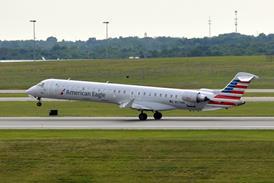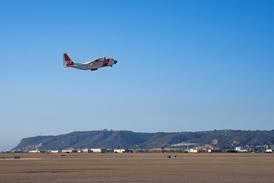Graham Warwick/WASHINGTON DC
Northrop Grumman is the first company to be awarded a contract under the US Defense Advanced Research Projects Agency's (DARPA) Quiet Supersonic Platform (QSP) programme to develop technology for long-range, low-boom military and civil aircraft.

The company says system integration studies under Phase 1 of the QSP effort will be a follow-on to its work on future strike aircraft (FSA) concepts for the US Air Force. "QSP is smack in the heart of the supersonic sweet spot" identified by Northrop Grumman's FSA studies, says programme manager Charles Boccadoro.
The FSA studies looked at the long-term requirements for a strike aircraft. "We're a proponent of studying technologies that further the supersonic regime, rather than hypersonic," he says. "We like the way supersonic looks as strike distances get longer and in-theatre exposure increases. This puts a premium on speed and we think you get more bang-per-buck for supersonic over hypersonic."
DARPA's QSP programme has an ambitious goal: minimal sonic boom from a 45,500kg (100,000lb) gross-weight aircraft with 14,000kg payload and 11,000km (6,000nm) range at Mach 2.4. Boccadoro says this is within the vehicle size range studied for FSA, which covered payloads from 4,500kg to 27,000kg and gross weights up to 140,000kg.
The QSP could be suitable as a regional strike aircraft rather than a global one, Boccadoro says, adding that its potential as a supersonic business jet is important. As principal subcontractor on Northrop Grumman's QSP team, Raytheon Aircraft will study the business jet aspects of the programme.
Other team members include sonic boom mitigation specialists Eagle Aeronautics and Wyle Laboratories, as well as MIT, Stanford University, the US Air Force Research Laboratory and NASA Langley.
DARPA is expected to award three system integration studies as well as multiple contracts covering propulsion and technology work. Under the year-long Phase I, the integrators will develop preferred concepts for low-boom aircraft. Two teams will then be selected for a year-long second phase to validate technologies for their chosen concepts. Industry hopes the QSP programme will lead ultimately to a flight demonstrator.
Source: Flight International























